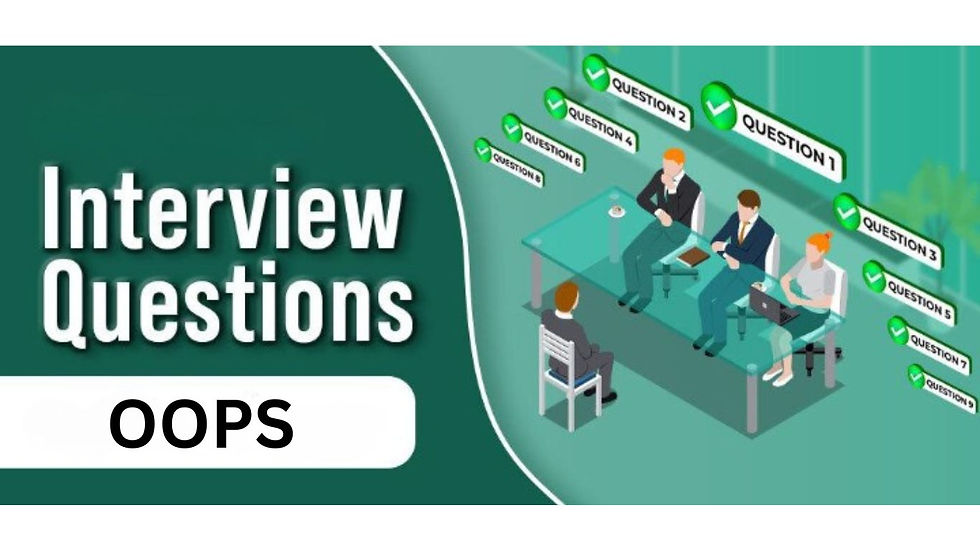What are some common CSS interview questions, and how do I answer them?
- Divyansh WsCube
- Oct 4, 2023
- 3 min read

Introduction:
CSS (Cascading Style Sheets) is a fundamental technology used in web development to control the presentation and layout of web pages. If you're preparing for a CSS interview, it's essential to be well-versed in CSS concepts and best practices. In this blog post, we will explore some common CSS interview questions and provide guidance on how to answer them effectively.
What is CSS, and what is its role in web development? Answer: CSS stands for Cascading Style Sheets. It is a stylesheet language used to describe the presentation and layout of HTML documents. CSS is essential in web development because it allows developers to control the appearance of web pages, including elements like fonts, colors, spacing, and positioning.
Explain the difference between inline, internal, and external CSS. Answer: Inline CSS is applied directly to HTML elements using the style attribute. Internal CSS is defined within a <style> element in the HTML document's <head> section. External CSS is stored in separate .css files and linked to the HTML document using the <link> element. External CSS is the preferred method for separating styles from content for better maintainability.
What is the CSS Box Model, and how does it work? Answer: The CSS Box Model defines how elements are rendered in the browser. It consists of content, padding, border, and margin. The content area contains the actual element content, while padding adds space between the content and the border. The border surrounds the content and padding, and the margin provides space between the border and neighboring elements.
Explain the concept of specificity in CSS. Answer: Specificity determines which CSS rule is applied to an element when multiple conflicting rules exist. It is based on the selector's type and number of selectors. In increasing order of specificity, the selectors are: element selectors < class selectors < ID selectors < inline style. To resolve specificity conflicts, the browser applies the rule with the highest specificity.
How can you center an element horizontally and vertically using CSS? Answer: To center an element horizontally, you can use the margin: 0 auto; property on a block-level element with a defined width. To center an element vertically, you can use the display: flex; and align-items: center; properties on the parent container, or you can use the position: absolute; and transform: translate(-50%, -50%); properties on the element itself.
What is a CSS selector, and how do you select elements with different types of selectors? Answer: A CSS selector is used to target HTML elements for styling. There are various types of selectors, including element selectors (e.g., p), class selectors (e.g., .class-name), ID selectors (e.g., #element-id), descendant selectors (e.g., div p), and pseudo-selectors (e.g., :hover). You can use these selectors in combination to target specific elements in your HTML document.
Explain the difference between margin and padding. Answer: Margin is the space outside an element, creating space between elements. It does not have a background color and does not influence an element's size. Padding, on the other hand, is the space inside an element, creating space between the element's content and its border. It does have a background color and affects the element's size.
What is the "float" property in CSS, and how does it work? Answer: The float property is used to move an element to the left or right, allowing other elements to wrap around it. It is commonly used for creating layouts with multiple columns. However, it can cause layout issues and is less commonly used in modern web development. To clear floats and prevent unwanted wrapping, you can use the clear property.
What are CSS pseudo-classes, and can you provide some examples? Answer: CSS pseudo-classes are used to select and style elements based on their state or position, such as :hover for styling elements when the mouse is over them or :nth-child() to select elements by their position in a parent container. Examples include :hover, :active, :focus, and :nth-child().
How can you make a website responsive using CSS? Answer: To make a website responsive, you can use CSS media queries. Media queries allow you to apply different styles based on the device's screen size or characteristics. You can define breakpoints and adjust layout, font sizes, and other styles to ensure that the website looks and functions well on various devices, from desktops to mobile phones.
Conclusion:
Preparing for interview questions on CSS involves a solid understanding of CSS fundamentals, selectors, the Box Model, specificity, and responsive design. It's also essential to demonstrate your problem-solving skills by providing clear and concise answers and examples during the interview. Practice coding exercises and working on real-world projects to reinforce your CSS skills and be better prepared for CSS-related interview questions.



Comments